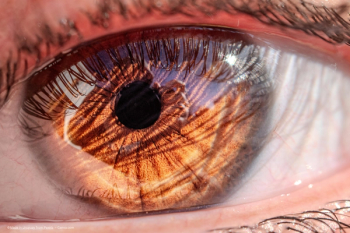
New fixed combination to replace a market leader?
Dr Philippe Denis & Dr Thierry Zeyen explain why they feel that a new fixed combination, Azarga, could soon become the therapy of choice.
Key Points
Philippe Denis, MD, PhD and colleagues conducted a 12-month, multicentre study in which 437 patients with open-angle glaucoma or ocular hypertension were assigned randomly to receive either brinzolamide/timolol (n=220) or dorzolamide/timolol (n=217) twice a day and compared the safety and efficacy of each drug combination. The mean IOP and mean IOP change from baseline (after washout) was assessed at 8 and 10 am at week two and at months three and nine, and at 8 and 10 am and 4 pm at months six and 12.
Results showed that both fixed-combination agents had similar IOP-lowering effects. IOP levels for the brinzolamide/ timolol group ranged between 16.7 and 18.8 mmHg, compared with 16.9 to 19.4 mmHg for the dorzolamide/timolol group.
Each agent, however, showed distinctly different adverse event profiles, with dorzolamide/timolol demonstrating more eye irritation perceived as burning (2.7% in the brinzolamide/ timolol group versus 10.6% in the dorzolamide/timolol group) and pain perceived as stinging (2.7% in the brinzolamide/ timolol group versus 6.5% in the dorzolamide/timolol group).
According to Dr Denis, the most common adverse event caused by the brinzolamide/timolol combination was transient blurred vision. This may be more tolerable and acceptable to patients, compared with the eye irritation felt as burning and pain in the dorzolamide/timolol group.
"One explanation for this blurred vision might be the nature of the formulation," said Thierry Zeyen, MD, co-author of the study. "[Brinzolamide/timolol] is a suspension, not a solution. The suspension has a white deposit and needs to be shaken before administration and can cause a little haziness. The blurred vision, however, was intermittent and mainly occurred immediately after the administration of the drops."
"[Dorzolamide/timolol] has been used widely over the past several years. However, I believe the new product, [brinzolamide/timolol], may emerge as the therapy of choice, given its superior comfort and powerful efficacy compared with [dorzolamide/timolol]," Dr Denis said.
According to Dr Zeyen, it is not sufficient in today's glaucoma treatment simply to achieve an IOP of lower than 21 mmHg, but to achieve a target pressure.
"One of the targets that we often want to achieve is an IOP below 18 mmHg; if you look at the two combinations in this study, we achieved a statistically similar percentage of patients having an IOP below 18 mmHg [up to approximately 60%]," Dr Zeyen said.
According to Dr Denis, in past studies, fixed-combination brinzolamide/timolol has demonstrated significantly greater IOP-lowering effect compared with either of the single agents (brinzolamide or timolol) when used alone, indicating that fixed-combination therapy can improve IOP to a greater degree than monotherapy.
Several different classes of IOP-lowering agents are used to treat glaucoma and ocular hypertension, including prostaglandin analogues (PGAs), beta-blockers, alpha-agonists, and carbonic anhydrase inhibitors (CAIs). PGA/beta-blocker combinations tend to be the most effective agents for reducing IOP, and brinzolamide/timolol and dorzolamide/timolol are both similar in efficacy to PGAs used as monotherapy. Beta-receptor antagonists, CAIs, and alpha-agonists used alone have been shown to have a lower efficacy than combination drugs such as brinzolamide/timolol and dorzolamide/timolol.
This increased efficacy, combined with the reduction in irritation and pain in eyes treated with the brinzolamide/timolol combination, may make this therapy the patients' preferred choice, Dr Denis reiterated. "Fortunately," he continued, "Ophthalmologists can support this choice because [brinzolamide/timolol] produces IOP-lowering results that are equal to [dorzolamide/timolol]."
Newsletter
Get the essential updates shaping the future of pharma manufacturing and compliance—subscribe today to Pharmaceutical Technology and never miss a breakthrough.










































